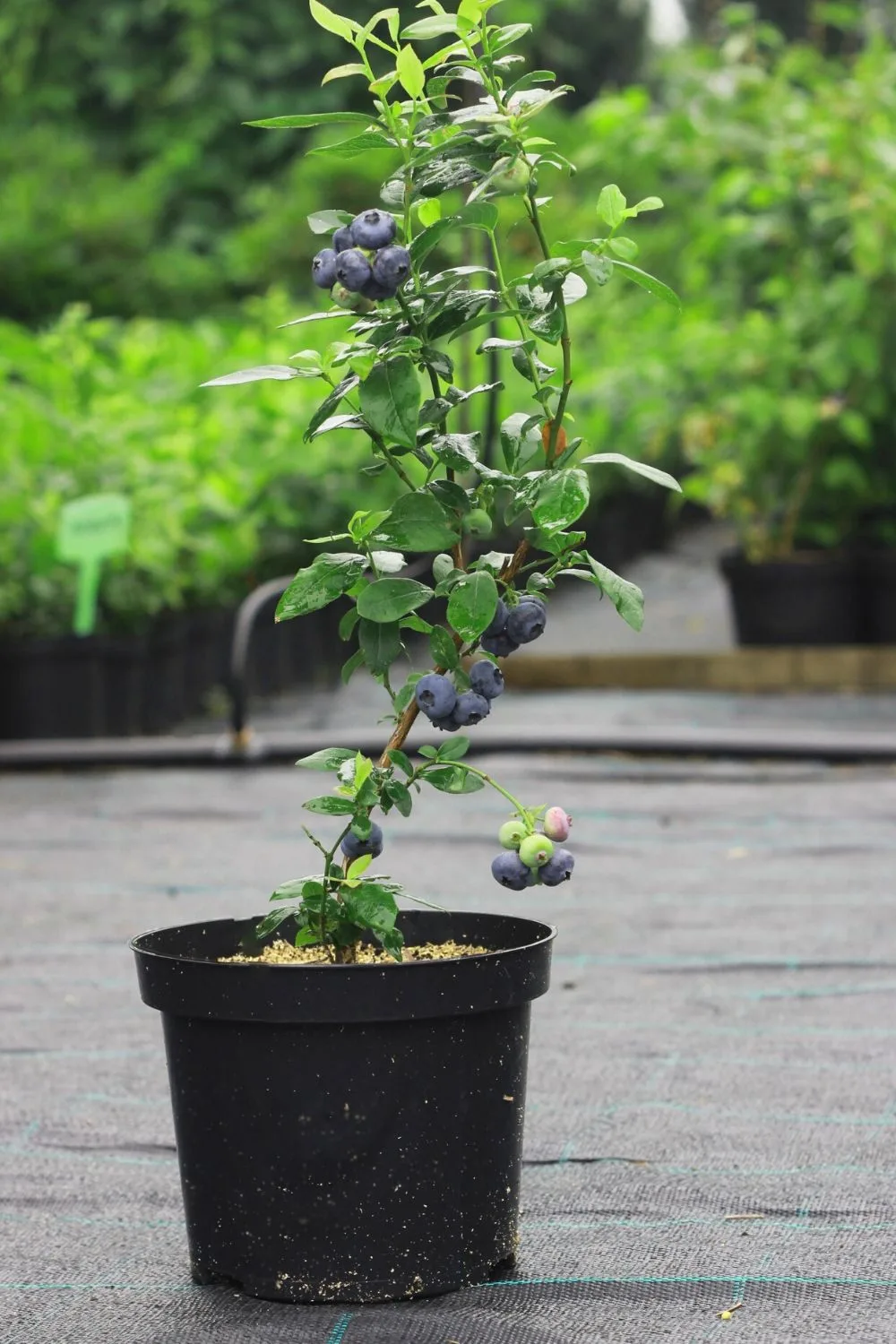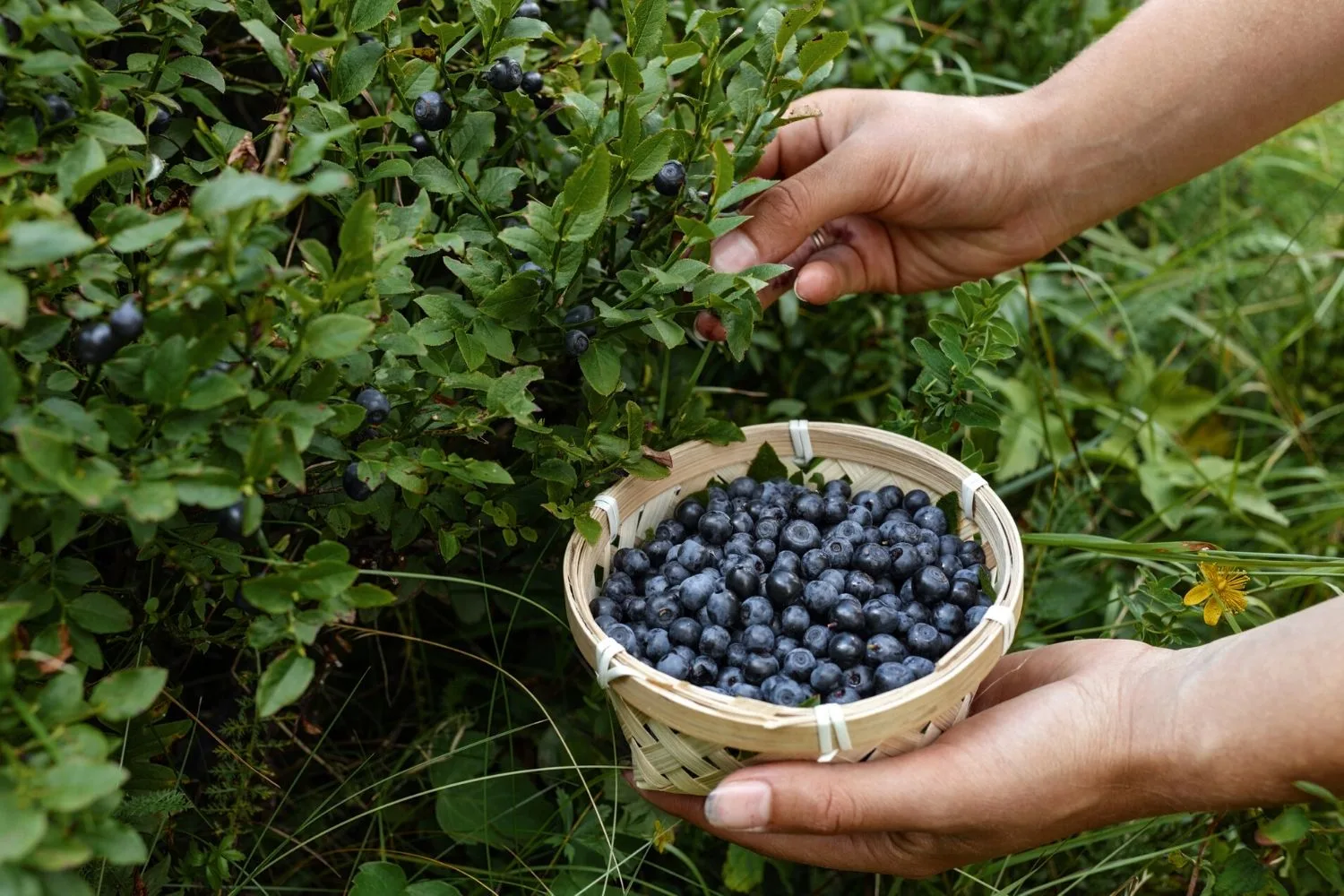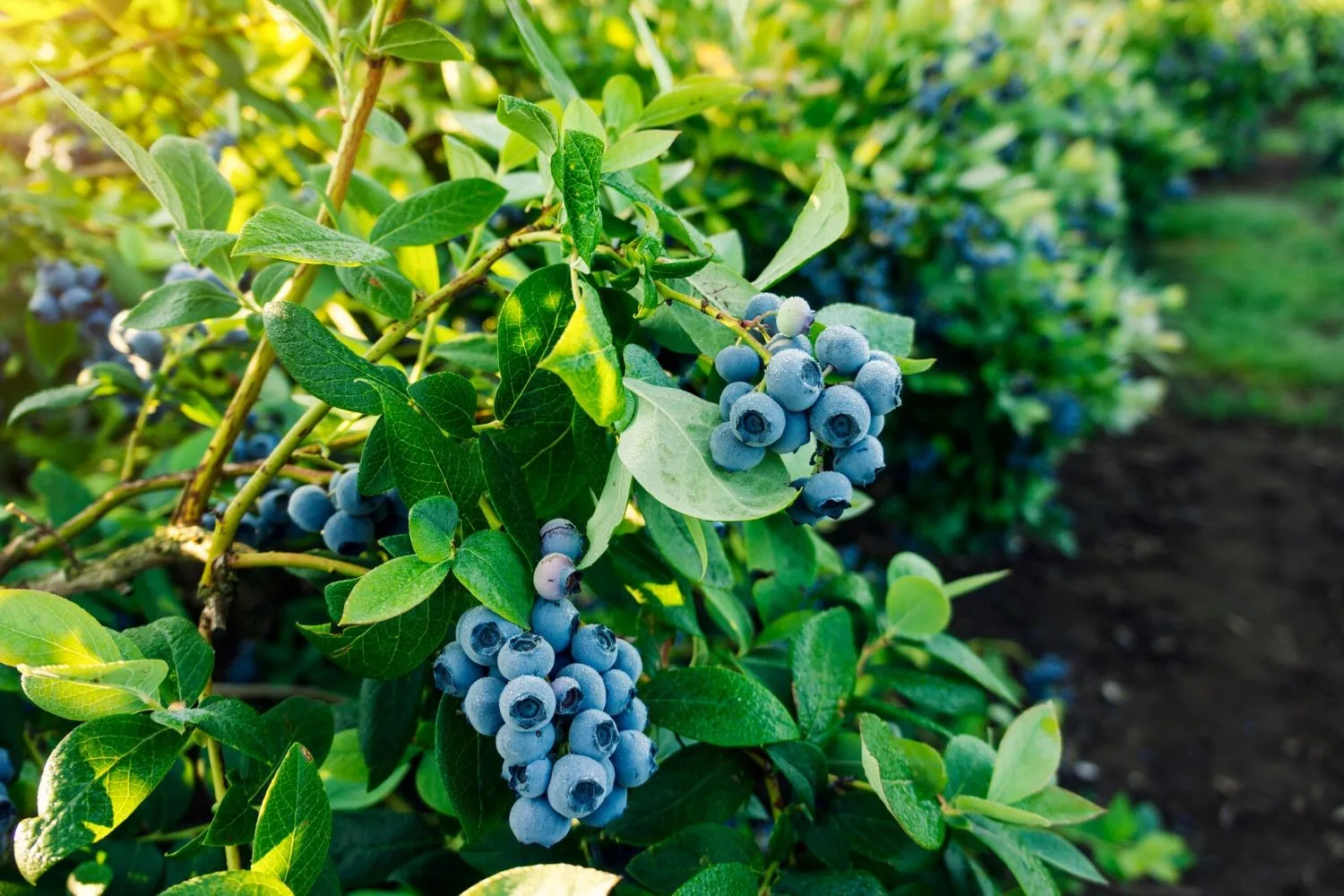
How to grow and care for blueberries at home
Blueberries don’t just taste delicious, they look deliciously good growing in your garden, too. Charlie shares everything you need to know to successfully grow blueberries at home – and not just in the veggie patch!
Blueberries are the palest, prettiest green in colour when they first appear, then deepen to purple and deepest blue as they ripen. They are one of the few foods that is naturally blue. Tiny but mighty blueberries are one of the healthiest fruits around – full of vitamins and minerals and rich in antioxidants to help counter the effects of everyday stress.
Growing blueberries at a glance

How to grow blueberries
Think beyond growing a little blueberry bush for the berries. You can grow a row of these shrubs – from 1-2m – and you have a low hedge of spring flowers, summer berries and autumn foliage. Or you can grow them in pots. Same result!
When to plant a blueberry bush?
Put bare-rooted plants in the ground or pots from late autumn to spring. Aim to get plants that are 2-3 years old, as the roots are already established and you can get fruit this summer. Soak bare-rooted plants in a bucket of water for 30 minutes prior to planting.
What type of climate does a blueberry plant need to survive?
A blueberry plant does not need any specific climate to survive, and thrive. The only thing that blueberries are fussy about is where they are planted. Blueberries can grow throughout Australia, just pick a variety that is best for your area.
How much sun do blueberries need?
Whilst they’ll tolerate part shade, blueberries definitely prefer full sun conditions. Full sun usually means more than 6 hours of direct sunlight throughout the day.
How often should blueberries be watered?
Blueberry plants are not drought-tolerant and have a shallow, fibrous root system. This means that they will need regular watering throughout the growing season – at least three times a week (just don’t let the soil get too soggy). Once established water once a week depending on the conditions.

Do blueberry plants need fertiliser?
Include lots of organic matter in the soil when planting, then avoid fertiliser for the first month. Add more organic matter or quality compost once a year in spring. Keep it 4-5cm away from the stem. When flowering and fruiting, feed weekly with liquid fertiliser for fruit.
What type of soil should I use?
Blueberry plants need well-drained and acidic to thrive in the garden. It is best to keep soil moist but not wet. For protecting the soil, using sugarcane or pea straw mulch is helpful, but keep it 4-5cm away from the stem.
When should it be harvested?
Wondering how long it takes for blueberries to grow? Experts recommend pruning fruits and flowers in the first year after planting but if you do so it is extremely helpful at promoting great roots for a longer lifetime of beautiful fruit.
Generally speaking, in Australia blueberry picking season is October to February but plants will fruit from July through to April.
Don’t pick too early as fruit may be tart. When berries are very dark, try a few to make sure they’re sweet enough, although they continue to ripen for a few days once picked.
Can you grow blueberries indoors?
You can grow blueberries in pots, however they will not survive in indoor conditions. This is because there is not enough direct sun, and temperatures are usually too hot/cold (depending on heating and cooling!) in indoor spaces.
Pests and problems with blueberries
Blueberry plants are often afflicted with many common pests, such as aphids and mealy bugs, that suck sap and damage the plant’s health. However, these problems can be easily fixed with monitoring and gardening sprays.
The real issue with blueberries is actually birds! Before fruiting begins, the best thing to do is net your bushes, so you don’t lose your lovely berry crops to birds looking for a nice snack.

Which blueberry variety is the best?
Did you know the first blueberry didn’t hit Australian shores until the 1970s? Now we’re spoilt for choice with so many different types of blueberries available:
- Northern highbush or Bluecrop: best for cold climates like Victoria and Tasmania.
- Southern highbush or Sunshine Blue: best for warmer climates like New South Wales and Queensland.
- Brightwell or Rabbiteye: one of the hardiest varieties around, best for moderately cool climates like New South Wales and Victoria.
- Sharpblue: known for its large fruit, best grown in New South Wales.
How to plant blueberries
- The easiest way to grow blueberries is from a small bush (2 to 3-year-old plants) which you can generally purchase in late Autumn and winter from your local hardware.
- Blueberries like acidic soil (pH 4.5-5.5) that is rich in organic matter (like compost), so look for potting mix similar to mixtures made for camellias.
- Dig a hole bigger than the size of your pot and using your hands cover and submerge the plant firmly with soil.
- Lay an organic mulch mix at the base keeping it 3-5cm away from the trunk.
- For the best crop, it is recommended that you plant 3-4 bushes at a time.
If you want to learn how to grow blueberries in pots, follow this guide.

How to prune blueberries
Pruning your blueberries is not necessary for the first 5-6 years.
When it comes to pruning, blueberries are happy with very little attention. If you’re growing blueberries in a pot trim back any long stems to keep the bush nice and compact. It doesn’t really matter when you prune but during the growing season is best. Flowers and fruit develop on the outer tips of the branches, so only remove dead wood in late winter-spring to allow new growth to emerge.
Plant care and troubleshooting
- Don’t be alarmed but blueberries will drop their leaves in winter.
- The reason why your pretty blueberry flowers won’t fruit is that your soil is not acidic enough or there’s not enough nitrogen in the soil. Add organic matter.

Companion plants for blueberries
The best companion plants for blueberries are basil, thyme and rhubarb.
Is the white and silver sheen on blueberries mould?
The silvery sheen – or bloom – on the skin of blueberries helps protect the fruit from insects. There’s no need to wash it off as it’s harmless to humans.



